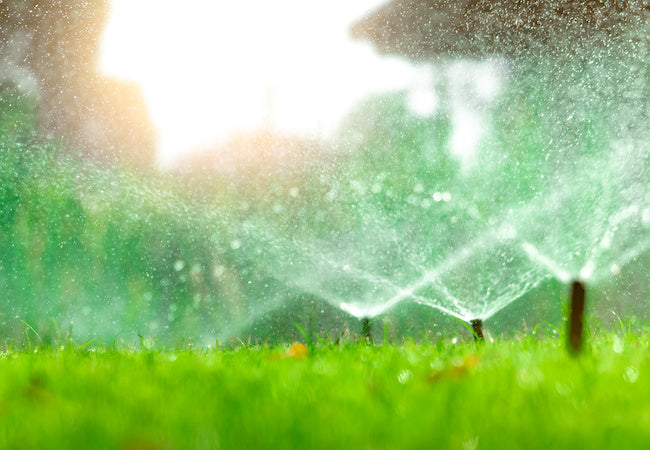Your Landscaping Choices Can Save 75% More Water
Posted on December 20 2022,

Why are we so obsessed with lawns?
In the American west, 60% of drinking water goes to outdoor use, such as watering lawns that shouldn't exist here in the first place.
A turf grass lawn behind a white picket fence is the quintessential picture of an all-American dream, so much so that lawn is viewed as the default for residential landscaping. A house gets built and sod gets rolled out––nothing to bat your eye at.
But the turf grass surrounding most single-family homes in America is high-maintenance, incredibly water-gulping, and all-around bad for the planet. Why do we keep defaulting to it?
How much water is used for typical landscaping?
When we talk about yards, we need to talk about water. The U.S. Environmental Protection Agency reports that the average American family uses about 30% of their water outdoors. In the West, the EPA reports, 60% of potable water (that’s DRINKING water!) is going to outdoor use.
And it’s not just that lawns require lots of water––we’re also not smart about how we water them. A recent study found that up to half of Utah homeowners are overwatering their lawns by as much as 50%.
That’s a lot of waste — and with drought and climate change impacting each and every one of us, it’s past time we take a good hard look at our water usage.
How can you conserve water in the landscape?
It’s possible to enjoy a livable, sustainable yard that uses a fraction of the water typically used in a residential landscape. That same study found that most of us can save significant water without negatively affecting your landscape. And experts say drought-tolerant yards can save 40% more water than a traditional lawn.
No matter how big your yard is or where you live, there are a few steps you can take to conserve water. Here are a few to get you started.
-
Make a yard plan.
The first step in creating a sustainable yard is to know what you’re working with. The best plans take into consideration your space’s climate, soil, water, vegetation, wildlife, and, of course, the people who use it. -
Remove grass where you don’t need it–efficiently irrigate it where you do.
Grasses require more water than drought-tolerant alternatives like fescues and ground-covering plants. - Install drought-tolerant, native plants.As we redesign our spaces, it’s crucial that we look to the original land stewards. Indigenous populations relied on native plants — plants that thrived without additional resources. Find out which plants are native to your area and incorporate them into your yard to prevent over-watering and increase biodiversity.
- Improve your irrigation.Whether you’re watering by hand or by sprinklers, irrigation improvements could save hundreds of gallons each time you water. Start by monitoring your soil levels, regularly checking for — and fixing — leaks, and installing drip irrigation where possible.
- Change how you water.Evaluate how often you need to water and ensure you’re not overwatering any area in your yard. Learn to water infrequently and deeply, rather than daily. And remember to water early in the morning or later in the evening to prevent evaporation.
This might seem like a lot — but if you take it one step at a time, and perhaps enlist the help of an expert or two, the results can be transformative. Research shows that taking action and completing these steps can reduce landscape water use by 35% to 75%!
Saving Money Through Sustainable Landscaping
Reducing your impact on the environment can also reduce your overall costs. Here are ways your sustainable landscaping can save you money:
- Reducing your water usage outdoors can save the average homeowner from a ghastly water bill each month.
- Sustainable landscaping can increase a home’s overall value.
- Many states incentivize sustainable yard choices through rebates. Search for “Flip the Strip” type rebates in your area to find more information.
We all know we need to conserve water.especially here in the western United States. At the risk of harkening to doom and gloom, we know that our climate is only getting hotter and drier and time goes on. Preparing our yards for a changing climate––and utilizing precious resources like water as effectively and efficiently as we can––will preserve these precious spaces for ourselves, our families, and our local wildlife.
YardFarmer is dedicated to transforming wasteful and wasted outdoor spaces into sustainable landscapes that require way less water.


